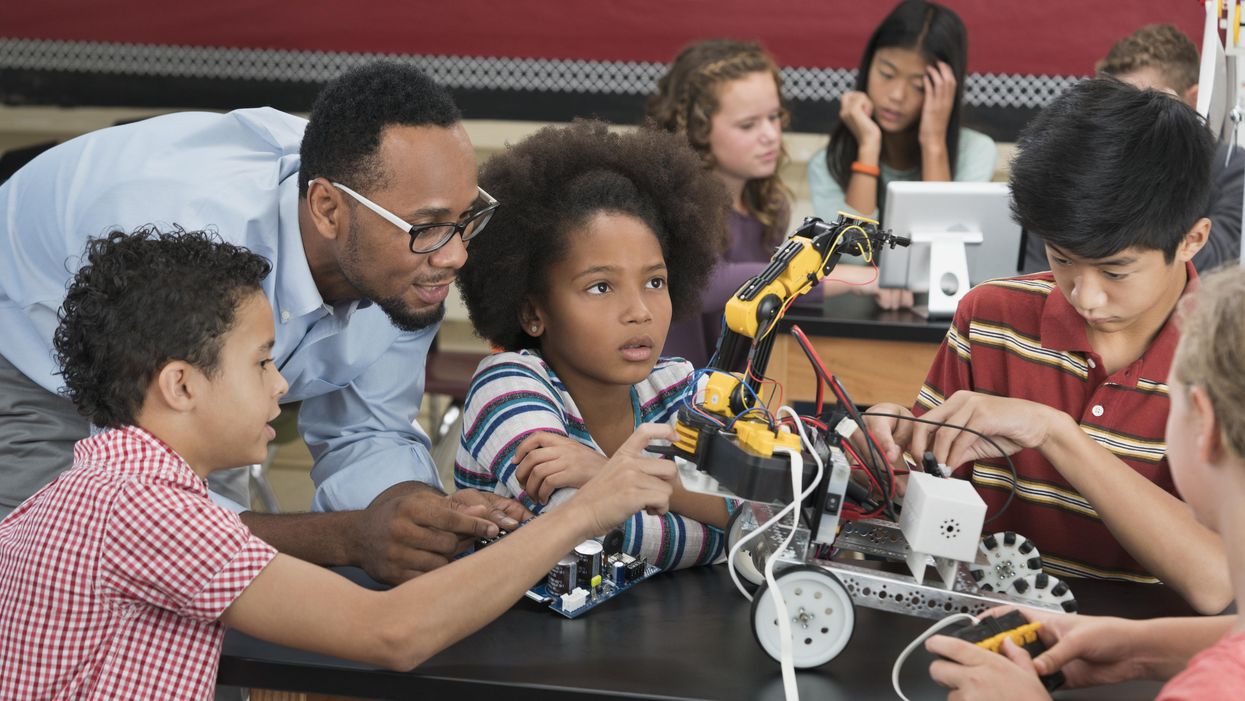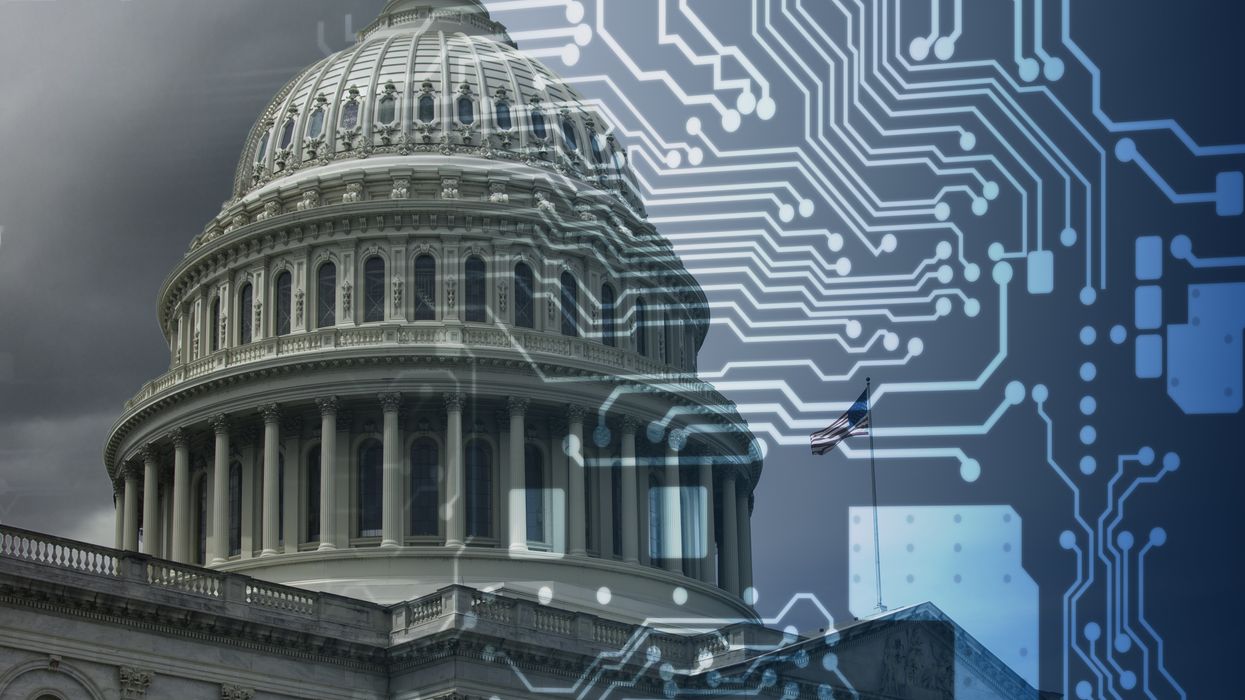Stimpson is a science educator, innovator, and former Drug Enforcement Administration scientist. She is a public voices fellow with The OpEd Project.
In December 1773, a group of white men donned attire as Indigenous Americans to hide their identities, and to avoid being caught in the “No Taxation Without Representation” protest against the British. This is the story we know as the Boston Tea Party.
In May 2020, the world’s largest group of protesters for civil rights reacted to the murder of George Floyd by police, and the rallying cry of “Black Lives Matter” that started in 2013 was solidified as the 21st century’s mantra.
Today, for all those working as “Black in STEM,” the outcries for representation and fairness are historic and familiar. As a Black professional in STEM, no matter your age, it has been a long journey with extraordinary obstacles to overcome to prove your seat at the table.
The National Urban League’s 2022 Equality Index reports that Black people are doing 25 percent as well as white people in terms of education. Black people are less likely to enroll in STEM classes and less likely to graduate from college.
A recent Pew Research Center Report shows Black and Hispanic adults are underrepresented among STEM college graduates compared with their share in the population, and a smaller share earn degrees in a STEM field than in other degree programs.
“Black students earned 9% of the STEM degrees awarded in 2018 across bachelor’s, master’s and doctoral levels, levels unchanged since 2010. Black students earned 5% of master’s and research doctoral degrees in engineering or physical science during the 2017-2018 school year. Black students comprise just 3% to 4% of degree-recipients in mathematics at the master’s level and above,” the study shows.
Not surprisingly, the long-term outlook for diversity in the STEM workforce is closely tied to representation in the STEM educational system, particularly across the nation’s colleges and universities.
Thus, it is concerning that Black and Hispanic adults are less likely to earn degrees in STEM than other degree fields, and they continue to make up a lower share of STEM graduates.
The decline of blacks in STEM continues to perpetuate even through the demand for STEM careers continues to escalate. The impact of this absence influences the global economy, as this gravely affects workforce development.
Pew reports, “Black workers, who comprise 11% of total employment across all occupations, are 9% of STEM workers. This is unchanged from 2016. Black workers account for just 5% of engineers and architects and 7% of workers in computer occupations. Hispanic workers are highly underrepresented in the STEM workforce – making up only 8% of STEM workers but 17% of total employment across all occupations.”
The future and promise of STEM progress through college. Yet, many Black college students face microaggressions and experience racial bias as they journey through their science classes. According to a 2020 study, these experiences quickly create an environment where Black students are “assumed to be inferior and are made to feel as if they do not belong.”
The field of science is just that — metaphorically, a field; it is the open space for scientific knowledge to grow. This field is where innovation and creativity come to life, and innovation, which has not yet been invented, is born.
Who is allowed to go on that field to create the narrative? The question is, why and when did science default to most often reverting to white as the dominant narrative.
According to a 2020 study with postdocs from underrepresented minority groups over a seven-year period, “This less-than-welcoming environment thrusts you into an emptiness that grates at you, reminding you that microaggressions are often unavoidable if you are Black-in-STEM.”
According to a 2020 American Enterprise Institute survey, Blacks face more obstacles in STEM than in any other fields. This absence is consistent with the dominant narrative of whose story is being shared.
The imbalance is confusing, as math is universal. Chemistry and physics are universal. Earth science, engineering and technology are universal. But representation is not.
The historic and ongoing absence of Blacks people in STEM is itself a social justice issue. The homogeneity of STEM continues to belie the future of the field. The call to action is to revolutionize the presence of Black voices in STEM and create a pathway that is ripe, with stepping stones needed to elevate and level-set.
According to the most recent data from the National Science Foundation’s National Center for Science and Engineering Statistics, the number of Black people who have earned bachelor’s degrees in psychology, social sciences and biological science has increased over the last 20 years. However, the share of bachelor's degrees in mathematics and statistics earned by African Americans has declined 7 percent to 4 percent.
As a Black, female scientist, I had the privilege of being hyper-visible in a field where my voice, presence and aptitude are equally invisible. I chose to leave the professional world of STEM to become an educator, teaching middle school science.
As an educator for nearly two decades, I have seen the enthusiasm of students ebb and flow in the face of learning science. Students need role models in my classroom. Some of my Black and Hispanic students have shown deeper curiosity about science, and girls of all races have shown interests in science.
The growth of STEM talent begins with STEM interest. The future and promise of STEM depend on students not only excelling in advanced science and math course work, but also on supportive teachers, family and out-of-class science exposure to propel their interests.
The richness of the science field is poised to elevate the voices of others. It is crucial to be intentional about building the next generation of science learners with scientific fluency.
Equity across all aspects of STEM is a necessity.
A solution is not feasible without first acknowledging the lack of fairness, as protesters and activists show up ready to solve it. This call to action assumes universal acceptance of intentional direct action utilizing Black voices for science education reform. Representation matters now more than ever.



















